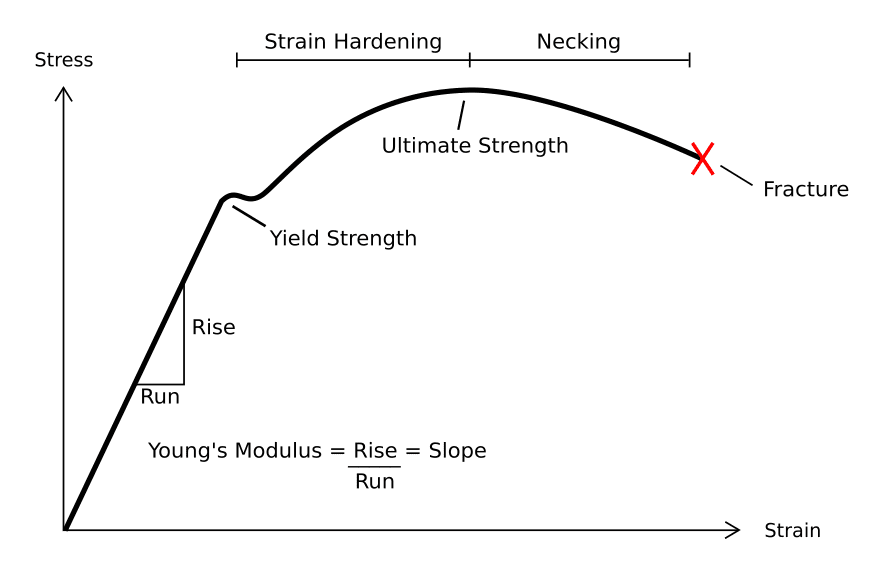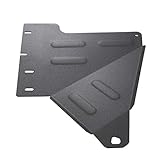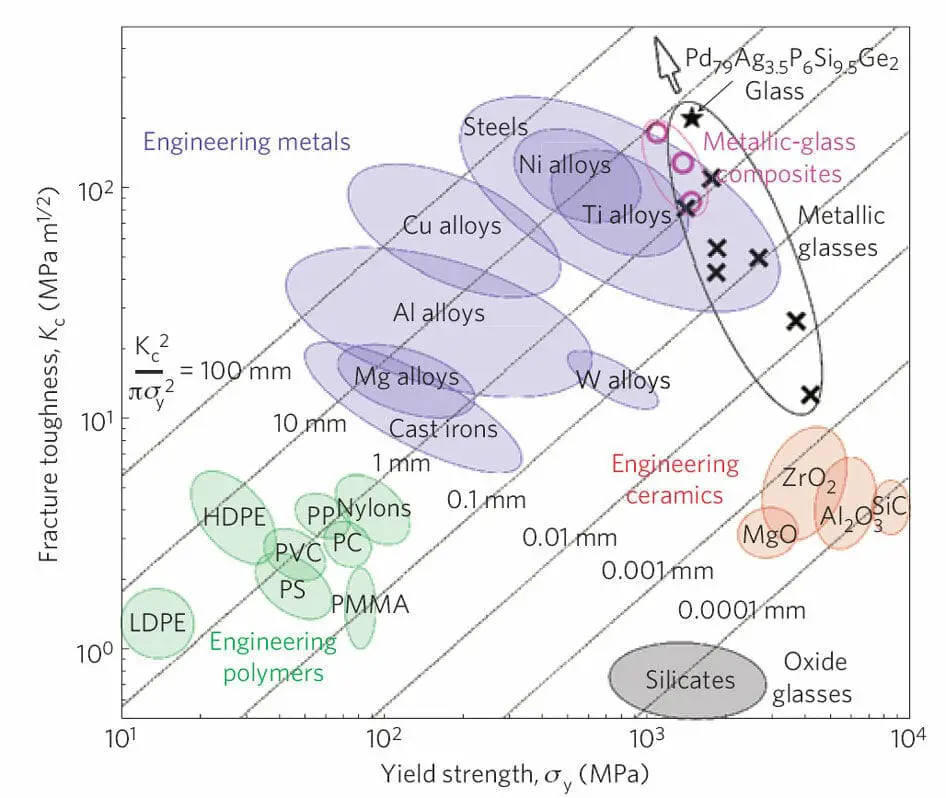what kind of steel should i use to make a skid plate
We decided to accept a deep dive into skid plates and armor to bank check out some of the differences betwixt Steel vs. Aluminum skid plates and how their properties and designs tin protect your off-road vehicle. From Rock crawling to trail riding slip plates are designed to protect your vehicle and give you a piece of heed. We swoop in and dig into all the gory details to provide you with some guidance on gearing up for your off-route mission.
Off Road Mission
If you're like me and out researching choices for sideslip plates and armor for your vehicle, you lot have a mission in your mind that you're looking to achieve. For me, it'south all about towing my Roof top tent on my trailer around the beautiful Southern Colorado Jeep Trails and experiencing the mountains firsthand.
In my case, I dearest off-roading in the San Juan mountains and excursions to other remote locations such as Moab or my nearby off-road playground Hidden Falls Risk Park. Both of which accept piles of rocks that will consume the underside of my Jeep if non careful.
For me, my mission isn't that of hardcore rock itch, only of more trail riding and back country driving. When out on these trails my experience suggests that i of the most common issues, I'd similar to defend against is shear forces. I've noticed when out on the trails when I feel I'chiliad bouncing around the most that lateral move across a surface during acceleration/slippage or lousy line or sliding off a rock (or the stone sliding out from nether me).
I also seek out something that is tough and durable – so to achieve these goals I started to research the materials science quantification of what is considered sturdy and durable.
Beyond protecting your vehicle, it's important that any time you're out off-roading that you pack along these off-road essentials. Skid plates and trunk armor are there to increase protection against dissentious parts of your undercarriage and vehicle, but they won't protect you from flat tires, road hazards, breakdowns, and other issues.
Skid Plate Technology
When it comes to these materials, the technology choices are what should drive your gear option. When we did our research, nosotros found steel sideslip plate armor is oft 3/16″ and aluminum is ane/iv″ thick. In some measurements,
This thickness gives the materials a "Same Standard" in that for some utilize cases the desired result is nearly the same.
I've reached out to a few manufacturers and vendors to enquire some questions on their engineering design decisions, but until I get a response, I did some research on describing the material science differences of the ii materials used in Skid plates.
I've broken down many of the property'southward engineers used in developing armor solutions and have tried to testify how they relate to skid plates.
Disclaimer: I'm not a materials science or certified engineer – This postal service is the event of research on the topic of aluminum vs. steel skid plates. Please permit me know if yous find whatever problems with our descriptions or math, and we'll update the article as needed. (Register to comment below!)
Engineered properties
Geometric Stiffness – the geometry of the shape and how information technology impacts stiffness – will the part curve?
Structural efficiency – the mass a structure tin can hold divided by the bass of the construction.
Hardness – the relative resistance that its surface imposes against the penetration of a harder body
Strength – the corporeality of forcefulness a textile can withstand and yet recover to its original shape
Toughness – the amount of energy that a cloth can absorb earlier fracture.
Stiffness – A mechanical property of linear elastic solid materials.
Deflection – Beam or load condition of a material with a stock-still end.
Geometric Stiffness of skid plates
Without having the engineering diagrams and formulas for each type of skid plate to calculate against, I tin can merely speak to this as a general reference that benefits both aluminum and steel plates.
The geometry of the plates needs to have a design and then that the strength, toughness, geometric stiffness, and structural efficiency are distributed non only amidst the armor but through the vehicle.
The geometric stiffness of the production should exist designed equally into each product whether its steel or aluminum. Both volition fail with improper geometric properties (and installation).
Steel has a slight do good when it comes to parts that need to be thinner every bit the stiffness and force will be higher than aluminum.
Structural Efficiency
With regards to structural efficiency – the ratio of a material's stiffness to its density, aluminum is shown to have a structural efficiency much greater than steel. An aluminum plate of equal thickness will weight 57% the equivalent steel plate and designed to the same stiffness; an aluminum plate will weigh ~ 45% of the same steel plate.
If you're resting on an object and the mass of your vehicle is resting on your skid plate, so the structural efficiency by weight scales in the factor of aluminum but thickness it scales in favor of steel.
Hardness of sideslip plates
1 fashion to measure the hardness of the material is the materials "Mohs calibration." The Mohs scale represents the resistance the surface imposes against the penetration of a harder body. Hardness is an splendid quality to have for something such every bit a skid plate for your fuel tank since your goal should be to resist puncture and accept fuel to become home safely.
Mohs scale of hardness:
The Mohs scale of mineral hardness is a qualitative ordinal scale that characterizes the scratch resistance of diverse minerals through the ability of a harder material to scratch a softer material
- Aluminum Hardness = two-three
- Steel Hardness = iv to 8
Every bit you can run across the hardness of steel is twice the hardness of aluminum at equal thicknesses. The measured proportional hardness is one area where aluminum plates are engineered to exist thicker than steel.
When information technology comes to hardness, steel at the same thickness is the harder fabric but aluminum being lighter tin can exist made thicker and have a better weight benefit. The pick is here a ton of protection at a college weight or some protection at a lower weight. If you're mostly scratching your JKU tank because of the longer wheelbase, then Aluminum affords enough protection, but if you're dragging across rocks in farthermost stone crawling, I will get with steel.
Strength of Skid Plates
What would exist some characteristic properties of technology skid plates? For protecting a fuel tank, you may be interested in shear strength and impact forcefulness and the yield strength of the material.
Shear force: Recall of shear strength as the ability of the material to withstand existence cut across like scissors, the stronger the shear force the harder it is to shear the materials in its cross sections.
Affect Forcefulness:This is the corporeality of energy absorbed before fracture.
Yield Strength:The yield strength of a fabric is the signal at which a textile begins to deform plastically. Earlier declining in such a way said material would render to its original shape when the practical stress is removed.
One time the yield forcefulness is surpassed some fraction of the deformation volition be permanent and non-reversible.
Shear Forcefulness
Shear strength is the forcefulness of a material or component confronting the type of failure where the material fails in a shear. In structural engineering, the shear strength component is of import for designing the dimensions and geometry of the materials used.
- Steels – 0.75 UTS (Ultimate Strength Relationship) and .58 TYS (Yield Forcefulness Relationship)
- Aluminum – .65 UTS and .55 TYS
UTS is the maximum stress above which the material will suspension

TYS is the stress at which a material deforms permanently. In the case of Aluminum vs. Steel sideslip plates, the shear strength of the materials and geometry of the equipment are the primary design divergence. The materials are equal in relational UTS and TYS when you figure in the thinner steel vs. thicker aluminum and geometry of the blueprint.
Impact Force
In general, for a given volume of material, steel will absorb more energy than aluminum. For a given volume, aluminum weighs only ane/3 as much as steel. If you could afford two/3 more aluminum (thickness), then you could exceed or run across the touch on forcefulness of steel. However, this isn't optimal for clearance of off-road vehicles.
Yield Forcefulness
- aluminum yield strength: 35mpa (megapascal) – 5076.3195 PSI
- steel yield strength: 205mpa = 29732.7285 PSI
Steel has half dozen times the yield strength of Aluminum. In this case, the geometry and thickness of aluminum would have to play a greater role to protect your vehicle in the case of yield strength tensions.
Stiffness
In simple terms, a stiff material needs more force to deform than a soft fabric. Youngs modulus is the measurement of a material'due south stiffness.
Youngs Modulus:
- Steel 205 GPa
- Aluminum seventy GPa
The Shear modulus represents a materials rigidity.
The shear modulus of 1018 steel vs. AA 2024 – Carbon Alloy vs. Aluminum Alloy
- Steel: 11603 ksi
- Aluminum 4029 ksi
A cloth having a large shear modulus is difficult to bend. Differences in shear modulus can be alleviated by the geometric properties of the skid plate likewise through ameliorate supports, transfer of stress and strain or even by a designed failure of the part.
Toughness of skid plates
When information technology comes to resisting fracture, steel has a higher tolerance as seen in the graph beneath. Aluminum can be made thicker to increase the toughness but must exist exponentially thicker to reach parallel toughness. On an off-route vehicle, you wouldn't necessarily want to trade off thickness for toughness since often clearance of your vehicle over obstacles is superior to skidding over obstacles, to brainstorm with. If you already accept great clearance and fracture isn't a concern, then this property may not exist role of your mission. I would also add that some people choose to take fracture as a means of protection in that the slip plate failing is doing its chore vs. having your vehicle disabled. Now if you do something that impacts both your plate and vehicle, then steel would offer the best protection.
Skid Plates – Deflection
One formula to sympathise the engineering science of aluminum vs. steel is the axle deflection estimator. This treats the stress as if the particular is a diving board, stress at the terminate of an item. This isn't much of an issue in most installations, but I have seen armor for drive shafts and axles that may fit this epitome. To continue the math easier this was calculated on a 20″ by 20″ by .25 (1/4) inch piece of aluminum vs. the standard size of 20″ by twenty″ by 3/16″ (.1875″) for Steel on a 4000 lb load.
To keep the math easier this was calculated on a 20″ by 20″ by .25 (1/4) inch piece of aluminum vs. the standard size of 20″ by twenty″ past 3/16″ (.1875″) for Steel on a 4000 lb load. (Calculated on Wolfram Blastoff)
Aluminum deflection:
- Deflection (inches) – 40.96
Angle Stress (psi) – 384000 - Energy (joules 9255.62
Steel deflection:
- Deflection (inches) – 32.36
Bending Stress (psi) – 682666
Free energy (joules) – 7313.0notes:
If deflection is a concern – such as armor that doesn't connect at both ends but has a back up construction that extends out then steel is by far the all-time and but option.
Aluminum vs. Steel skid plate Costs
In comparing products from the same vendor (to remove variables of brand cost differences), aluminum sideslip plates have a higher overall cost than steel skid plates.
According to fueleconomy.gov, 100 lbs. of weight can brand your car 1% less efficient when it comes to gas mileage. On a Jeep which is already a brick driving against the wind virtually of the time, this number is slightly larger. Let'due south say adding aluminum sideslip plates saves you 50lbs over steel sideslip plates and you plan to drive your vehicle for 150k miles. Saving .02cents/gallon
Using EPA averages (which are hard to meet) let's say you get 18MPG.
150,000 / 18 = 8,333 gallons of gas over lifetime * .02 (fuel economy cost of weight) = $167 dollars in gas savings
Over the life of the car, the 50lbs may not add up to much since the cost of aluminum surpasses steel past every bit much as the total savings. However, if you lot do the above math on a more reasonable and real ~15mpg efficiency of Jeeps, it will slightly favor aluminum fifty-fifty more. (Particularly if fuel prices go up)
If y'all have a newer JLU with the turbo or diesel, I would dear to hear almost your mileage and feel with sideslip plates and added weight. Leave a annotate below!
Where weight may have a bigger toll saving is in affording you weight in other areas such as bumpers/gear or reducing stress on components such every bit elevator and shocks preserving elevator heights and such.
Aluminum vs. Steel sideslip plate Corrosion & Fatigue
Aluminum is field of study to fatigue failure (its endurance limit) wherein steel fatigue is not normally an result with the exception that both take limits effectually engines. (vibration). 1 would normally mitigate this by providing cantankerous supports and bracing/connections to reduce deflection & fatigue.
An advantage of aluminum is that aluminum will non rust and doesn't need a bear upon-up painting, however, it volition corrode, but such corrosion creates an oxide bulwark which prevents further corrosion. If you don't touch upward paint on scratched steel, the steel may rust and corrode leading towards premature failure.
Buy Online

Smittybilt 76922 XRC Engine/Transmission Skid Plate for 2007-2018 Jeep Wrangler JK
- Ultimate protection for essential component
- Thick, 3/16" steel shield that is precision light amplification by stimulated emission of radiation cut for a perfect fit
- Easy, no-drill installation, all hardware included
- Complete Smittybilt XRC Skid Plate series includes: Transfer Case *#76920), Evap Canister Guard (#76921) and Engine/Transmission Plate (#76922). All...
- Please NOTE: Engine/Transmission Slip Plate requires a 2" Lift.

Smittybilt 76920 XRC JK Skid Plate
- Fits 2007 - 2015 Jeep Wrangler and Wrangler Unlimited
- Fabricated of 3/16 steel for added armor
- Transfer example skid plates mount solidly to the Jeep's frame using the mill hardware and are particularly designed for easy bolt-on installation
- No drilling is required for a 100 percent completely bolt-on installation
- Precision laser cutting for exacting fit

Smittybilt 76921 Skid Plate,Black
- Fits 2007 to 2011 JK Wrangler 2 and iv-Door
- Constructed from three/16" Cold Rolled Steel
- Black Pulverization Glaze Finish
- Uses factory mounting locations
- Sideslip PLATE EVAP CANISTER Baby-sit
Make sure that equally you shop for slip plates that you lot shop for your appropriate twelvemonth, model, and make of vehicle. They will vary between 2door, 4 door and CJ, YJ, JK, JL Jeeps.
Aluminum vs. Steel skid plate Wrap Up
All said and done; I believe aluminum sideslip plates will work for my mission to help provide protection for critical components on my Jeep to reduce the possibility of existence disabled while out on remote mount trails. If your mission is hardcore stone itch you lot look to elevate/slide and bounciness your vehicle over rocks, then steel plates may still be your best choice. The reduced weight of aluminum, the shear strength and improved hardness and toughness over non having anything to me is better than having nil and optimal for my mission in weight savings and ease of maintenance.
I'm personally excited to come across expansion into aluminum and hope fabric sciences will continue to meliorate to reduce weight, improve the efficiency and prophylactic of vehicles. I'm not entirely sure it's worth the extra cost vs. steel, but I will say an engineered aluminum solution does offering protection and an overall weight saving and with a lower weight, ease of install is a wonderful matter too.
In the end though, it's a tough call and more of a personal pick. In some respects, the steel seems to win hands down when it comes to overall engineering properties on paper, but, it may exist better to take a skid plate fail in some cases rather than have that potential energy transfer to the vehicle.
For example, it may be amend to shear off a office of your skid plate at extreme stresses with an aluminum plate than information technology would be to blot said forces on a steel plate and potentially break off bolts/connections/rods. In other words, the failure of the skid plate may be the sideslip plate doing its chore.
Again, I'thou not a trained engineer. I would dear some feedback and then delight post your experiences and thoughts in the comment section below. Registration is quick & easy. I'll also attempt and update this post with more direct links to Wolfram for the actual math for those who want to experiment around.
Rubber Trails!
![]()
I'1000 a 40 something father of two girls who loves the mountains, still plays in the sand and enjoys existence in the groovy outdoors. The mountains are ever calling my name.
"Wilderness is a necessity" – John Muir
Source: https://rockchucksummit.com/aluminum-vs-steel-skid-plates-and-armor/

0 Response to "what kind of steel should i use to make a skid plate"
Post a Comment